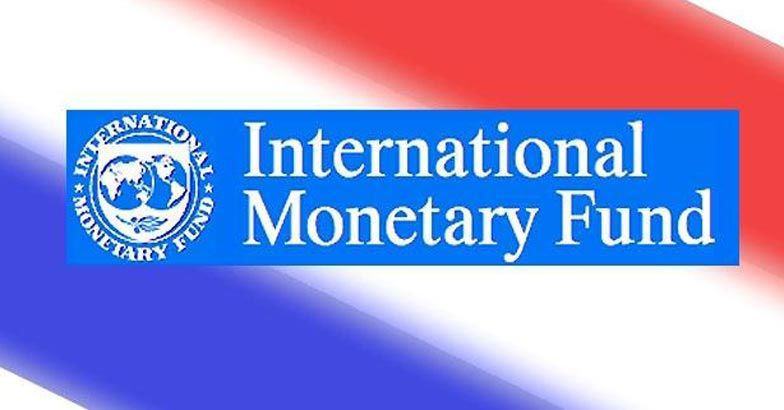Sri Lanka’s gross domestic product in 2021 has been downgraded to 4.0 percent by the International Monetary Fund from a 5.3 percent forecast in October 2020, with global growth upgraded to 6.5 percent from an earlier 6.0 percent.
Sri Lanka has already reported a contraction of 3.6 percent for 2020 amid a Coronavirus pandemic and monetary instability.
Recovering Faster
The global expansion is led by the US, which is expected to grow at 6.4 percent after contracting 3.5 percent in 2020.
Europe is expected to grow 4.5 percent, with the Euro area growing 4.4 percent, the IMF’s World Economic Outlook report said.
Asia is expected to grow 7.6 percent with China growing 8.4 percent after growing 2.3 percent in 2020 and India 12.5 percent after contracting 8.0 percent last year.
“Thanks to the ingenuity of the scientific community hundreds of millions of people are being vaccinated and this is expected to power recoveries in many countries later this year,” IMFs Chief Economist Gita Gopitnath said.
“Economies also continue to adapt to new ways of working despite reduced mobility, leading to a stronger-than-anticipated rebound across regions.
“Additional fiscal support in large economies, particularly the United States, has further improved the outlook.”
US President Joe Biden has unveiled an infrastructure plan on top of the expected economic recovery.
His Treasury Secretary, ex-Fed Chief Janet Yellen, who imposed two monetary squeezes in 2014 (quantity tightening) and 2018 (rate hikes and more quantity tightening), has said it will be tax funded.
She has also called for a single corporate tax around the world.
China, where the Wuhan virus originated has been controlling the spread of the disease through tracing and quarantine.
Vietnam, another contact tracing country, that grew in 2020 at 2.9 percent is foretasted to grow 6.5 percent in 2021.
Vietnam has eschewed stimulus and engaged in contact tracing and kept its currency stable at 23,000 to the US dollar as an external anchor, after a stimulus debacle after Feds housing bubble bust in 2009 led to collapse of the currency from 15,000 to 22,000.
Bangladesh has also kept is currency stable at around 87 to the US dollar, maintaining domestic stability and is expected to grow 5.0 percent in 2021, after growing 3.8 percent in 2020. Coronavirus deaths have been low in Bangladesh.
Taiwan which also contact traced Covid-19, grew 3.1 in 2020 (3.1 percent) and is expected to grow 4.7 percent in 2021.
“The pandemic is yet to be defeated and virus cases are accelerating in many countries,” Gopinath said.
“Recoveries are also diverging dangerously across and within countries, as economies with slower vaccine rollout, more limited policy support, and more reliance on tourism do less well.”
Heavily tourism reliant Maldives is expected to grow 18.9 percent in 2021 after contracting 32.2 percent in 2020.
Sri Lanka has kept down Coronavirus with active tracing and home isolation and a vaccination drive is underway.
Sri Lanka’s central bank is forecasting a 6.0 percent growth for 2021.
External Drain
Sri Lanka’s central bank is printing money at an unprecendented rate despite running pegged exchange rate, after tax cuts in December 2019 in a fiscal ‘stimulus’, put the budget in a crisis.
The IMF is estimating a budget deficit of 11.8 percent for 2020 and 10.5 percent for 2021. Central government debt is expected to have topped 100 percent of GDP in 2020 and is forecasted to reach 105 percent in 2021.
The printed money is leaving the country in a classic ‘external drain’ eating away at foreign reserves backing the peg, mainly through the financial account amid debt repayments. Sri Lanka’s sovereign rating has been downgraded to ‘CCC’.
However economic activity is recovering and oil prices are rising, putting further pressure on the credit system, due to a mandated fuel prices.
Taxes were cut in December 2019 after Sri Lanka’s highly-unstable peg collapsed twice in three years due to operating un-anchored monetary policy involving ‘flexible’ exchange rate (no credible external anchor) and ‘flexible’ inflation targeting (no-credible domestic anchor).
The IMF itself taught the central bank to calculate an output gap, though the agency has no growth mandate.
Stimulus
Gopinath said rising Federal debt in the United States was made affordable by low interest rates.
The Federal Reserve had indicated that it will continue to inject liquidity in a ‘stimulus’ despite the economic recovery.
Meanwhile US bond yields have been edging up and commodity prices are also picking up.
Classical economists have warned that Federal Reserve Chair Jerome Powell’s claims lack credibility and inflation would rise faster than expected and a commodity bubble is on the way.
Gopinath said the Fed had promised prior warning before reversing its policy stance. Meanwhile South American nations were benefiting from rising food commodity prices, she said.
The Federal Reserve, which is the world’s youngest reserve currency central bank, has been single-handedly responsible for the worst central banking errors in the last century which had global impact.
It created the Great Depression soon after then New York Fed Chief Benjamin Strong discovered open market operations and fired the ‘roaring 20s’ bubble.
The Fed ended the Gold Standard, which had existed for over three centuries, under its then Chief Arthur Burns, who targeted an output gap under pressure from President Nixon who eventually closed the gold window in 1971 creating floating fiat money.
In 2008 under Alan Greenspan egged on by Ben Bernanke, the Fed fired a so-called ‘mother of all liquidity bubbles’ to reverse ‘deflation’ which resulted in what is now called the Great Recession or Great Financial Crisis.
Bernanke outlined the the outlined the idea in his now infamous speech “Deflation: Making Sure “It” Doesn’t Happen Here” before the National Economic Club in Washington on November 21, 2002.


